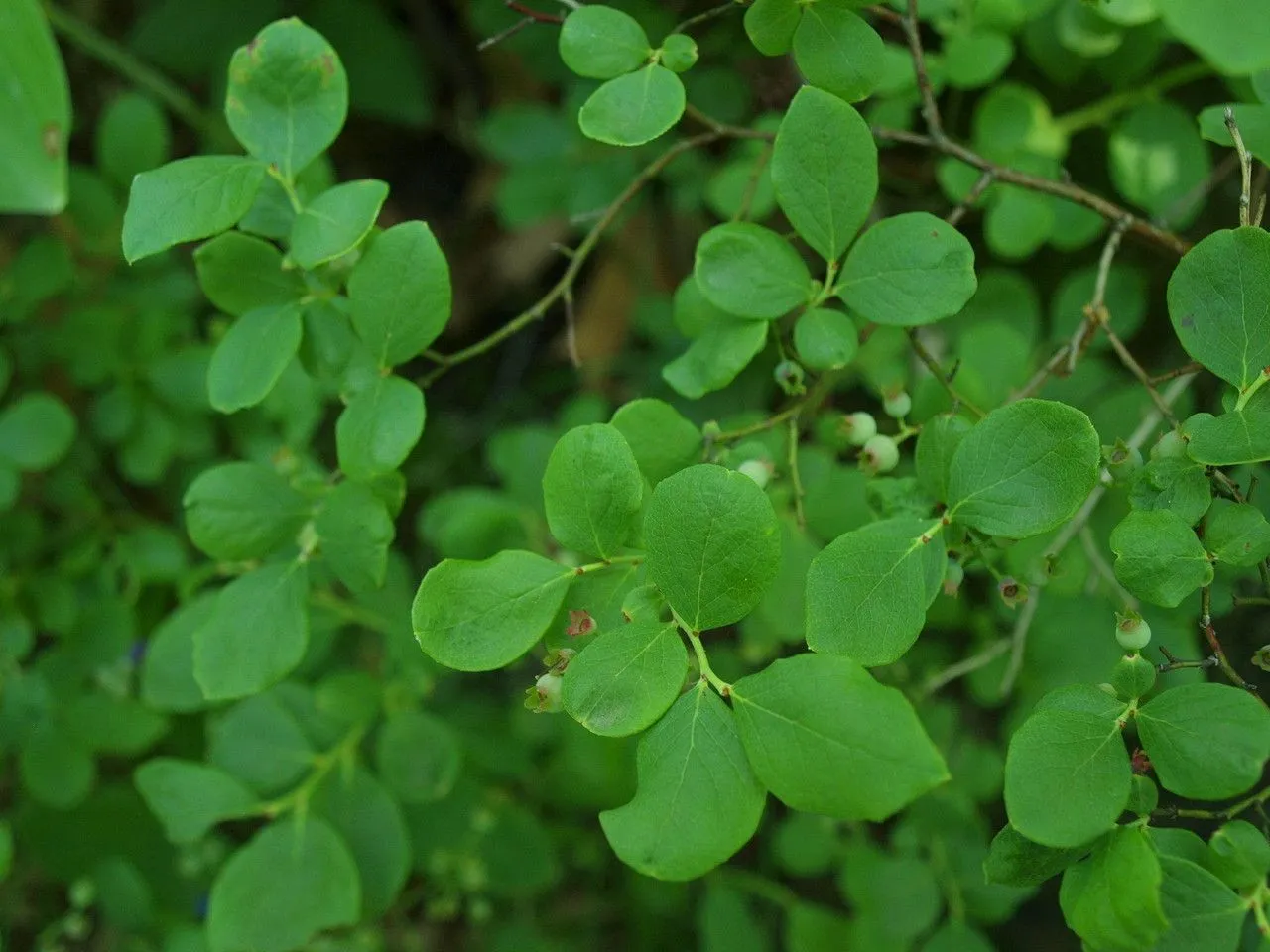
Author: Aiton
Bibliography: Hort. Kew. 2: 10 (1789)
Year: 1789
Status: accepted
Rank: species
Genus: Vaccinium
Vegetable: False
Observations: SE. Canada to NC. & E. U.S.A.
The Dryland Blueberry, scientifically known as Vaccinium pallidum, is a notable member of the Ericaceae family. This plant holds historical significance with its first formal description being published in 1789 in “Hortus Kewensis,” authored by William Aiton.
Widely distributed across parts of southeastern Canada through to North Carolina and the eastern United States, the Dryland Blueberry thrives in varied terrains, often in dry, wooded, and rocky environments. Its natural habitat preference underscores the common name, highlighting its adaptability to less fertile soils where moisture may be limited.
Visually, the Dryland Blueberry is distinguished by its foliage and fruit. The leaves of the Vaccinium pallidum are typically small, exhibiting a delicate, pale green hue. In spring and early summer, the plant produces small, bell-shaped flowers that transition into blueberries by late summer. These berries are not only a crucial food source for wildlife but also valued by humans for their sweet taste and nutritional benefits.
Botanically, the Dryland Blueberry shares many traits with other members of the Ericaceae family, such as its preference for acidic soil and the characteristic structure of its flowers and fruits. This plant’s resilience and adaptability make it a subject of interest in botanical studies, particularly those focused on plant survival in xeric (dry) conditions.
Overall, Vaccinium pallidum exemplifies the fascinating interplay between plant species and their environments, revealing the delicate balance that sustains both flora and fauna in diverse ecosystems.
Eng: blue ridge blueberry, blueberry, dryland blueberry, hillside blueberry, hillside lowbush blueberry, late lowbush blueberry, pale blueberry, hilllside lowbush blueberry
Swe: bergsblåbär
Fra: airelle pâle
En: Dryland blueberry, Hillside blueberry, Hillside lowbush blueberry, Blue Ridge blueberry, Late lowbush blueberry, Blueberry, BLUERIDGE BLUEBERRY, Pale blueberry, Hilllside lowbush blueberry
Fr: Airelle pâle
Sv: Bergsblåbär
: Blue ridge blueberry
Taken Jun 3, 2020 by William Coville (cc-by-sa)
Taken Apr 30, 2019 by Amber Thornton (cc-by-sa)
Taken Apr 26, 2020 by Bubba Crosley (cc-by-sa)
Taken Jun 26, 2021 by Jun-tsui Fan (cc-by-sa)
Taken May 12, 2021 by Joel Hicks (cc-by-sa)
Taken May 24, 2020 by Serena boettcher (cc-by-sa)
Taken Jun 3, 2020 by William Coville (cc-by-sa)
Taken Apr 12, 2011 by EOL − Ron Thomas (cc-by-nc-sa)
Taken Apr 24, 2004 by EOL − Steven J. Baskauf (cc-by-nc-sa)
Taken May 12, 2021 by Joel Hicks (cc-by-sa)
Taken Jun 16, 2021 by Richard Wilkens (cc-by-sa)
Taken Jan 1, 1900 by EOL − Carol Kelloff (cc-by-nc-sa)
Taken Aug 2, 2013 by EOL − Erin Faulkner (cc-by-nc)
Taken Jul 31, 2022 by Jennifer Summey (cc-by-sa)
Taken Jun 26, 2021 by Jun-tsui Fan (cc-by-sa)
Taken Apr 30, 2022 by Brad Kelley (cc-by-sa)
Taken Oct 27, 2021 by Alison Brown (cc-by-sa)
Taken Oct 27, 2021 by Alison Brown (cc-by-sa)
Taken Jan 1, 1900 by EOL − John Hilty (cc-by-nc)
Taken Apr 12, 2011 by EOL − Ron Thomas (cc-by-nc-sa)
Taken Apr 12, 2011 by EOL − Ron Thomas (cc-by-nc-sa)
Taken May 14, 2012 by EOL − Marie Studer (cc-by)
Taken Jun 7, 2012 by EOL − Charlie Hohn (cc-by-nc)
Taken Jan 1, 1900 by EOL − Carol Kelloff (cc-by-nc-sa)
Taken Aug 2, 2013 by EOL − Erin Faulkner (cc-by-nc)
Taken Apr 30, 2022 by Brad Kelley (cc-by-sa)
© copyright of the Board of Trustees of the Royal Botanic Gardens, Kew.
© copyright of the Board of Trustees of the Royal Botanic Gardens, Kew.
Growth habit>: Subshrub, Shrub
Family: Myrtaceae Author: (F.Muell.) K.D.Hill & L.A.S.Johnson Bibliography: Telopea 6: 402 (1995) Year: 1995 Status:…
Family: Rubiaceae Author: Pierre ex A.Froehner Bibliography: Notizbl. Bot. Gart. Berlin-Dahlem 1: 237 (1897) Year:…
Family: Sapindaceae Author: Koidz. Bibliography: J. Coll. Sci. Imp. Univ. Tokyo 32(1): 38 (1911) Year:…
Family: Asteraceae Author: A.Gray Bibliography: Pacif. Railr. Rep.: 107 (1857) Year: 1857 Status: accepted Rank:…
Family: Fabaceae Author: Medik. Bibliography: Vorles. Churpfälz. Phys.-Ökon. Ges. 2: 398 (1787) Year: 1787 Status:…
Family: Aspleniaceae Author: (Cav.) Alston Bibliography: Bull. Misc. Inform. Kew 1932: 309 (1932) Year: 1932…